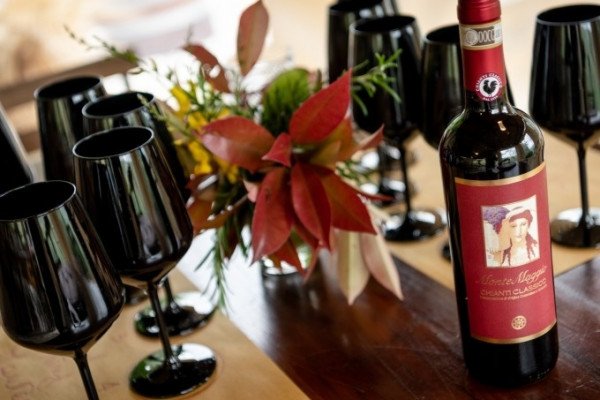
Organizing a blind tasting is a fun and educational experience, perfect for both wine enthusiasts and beginners eager to refine their palate. This type of tasting eliminates any preconceptions related to labels or the reputation of a wine, allowing participants to focus solely on its organoleptic characteristics. Following a few simple steps can turn this event into a memorable success.
1. Define the Purpose of the Tasting
Before starting, it is important to establish the goal of the tasting. It can be a casual event among friends, an exercise to enhance sensory skills, or a comparative analysis to determine the best wine according to the group. Some blind tasting themes include:
- Regional comparison: wines made from the same grape variety but from different regions.
- Same grape, different producers: an excellent way to explore the nuances of a single varietal.
- Old vs. new vintages: an experience that helps understand how aging affects wine.
- Affordable vs. premium wines: useful to determine whether price truly reflects perceived quality.
2. Choosing the Right Wines
For a balanced tasting, select between 4 and 6 wines. A larger number might fatigue the palate and make analysis more difficult. It is essential to maintain a common thread among the selected wines to facilitate comparison.
Some suggestions:
- For reds: Sangiovese, Cabernet Sauvignon, Pinot Noir, or Syrah.
- For whites: Chardonnay, Sauvignon Blanc, Vermentino, or Riesling.
- For a mix: alternate white and red wines, starting with the lighter ones.
3. Preparing the Necessary Materials
Good organization is crucial. Make sure to have:
- Identical wine glasses, to avoid variations in perception due to shape.
- Opaque covers for the bottles, such as paper bags or fabric sleeves, to hide labels and distinctive shapes.
- Tasting sheets, where participants can note aromas, acidity, body, and finish.
- Numbered bottles, for easy identification without revealing identities.
- Water and neutral bread, to cleanse the palate between tastings.
- A spittoon or container for discarding wine, useful for those who want to limit alcohol intake and maintain sensory clarity.
4. Creating the Ideal Conditions
The environment in which the tasting takes place significantly influences the sensory experience. Some key aspects to consider:
- Lighting: a well-lit room helps assess wine color, but avoid overly bright or direct lights.
- Ambient odors: avoid strong perfumes, scented candles, or intensely aromatic foods that could interfere with olfactory perception.
- Wine temperature: whites should be served between 8-12°C and reds between 14-18°C to enhance their qualities.
5. Conducting the Tasting Step by Step
Once everything is set up, follow these steps to guide the tasting:
- Visual examination: evaluate the color, clarity, and consistency of the wine by tilting the glass against a white background.
- Olfactory analysis: smell the wine without swirling first, then swirl the glass to release aromas and smell again.
- Tasting: take a small sip, let the wine coat the mouth to perceive acidity, tannins, body, and aromatic persistence.
- Discussion and notes: encourage participants to express their impressions without bias.
6. Revealing the Wines and Sharing Opinions
After the tasting, the most anticipated moment arrives: revealing the bottles. This step is often surprising and allows participants to:
- Discover if their personal preferences match initial expectations.
- Uncover biases related to labels and brands.
- Learn from others’ feedback and insights.
If the event is competitive, you can assign scores and declare the best wine of the evening.
7. Pairings and Conclusion
After the tasting, offering small food pairings can enhance the experience. Cheeses, cured meats, dark chocolate, or dried fruits can highlight specific wine characteristics and make the event even more enjoyable.
A well-organized blind tasting not only provides a fun and educational experience but also helps develop an impartial understanding of wine quality. By following these guidelines, you can create an engaging and successful event, perhaps featuring an exclusive selection of Montemaggio wines!






Leave a Reply